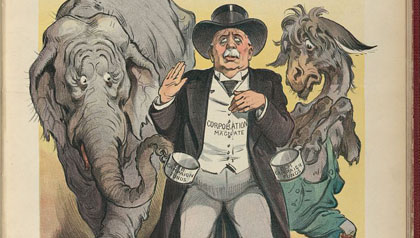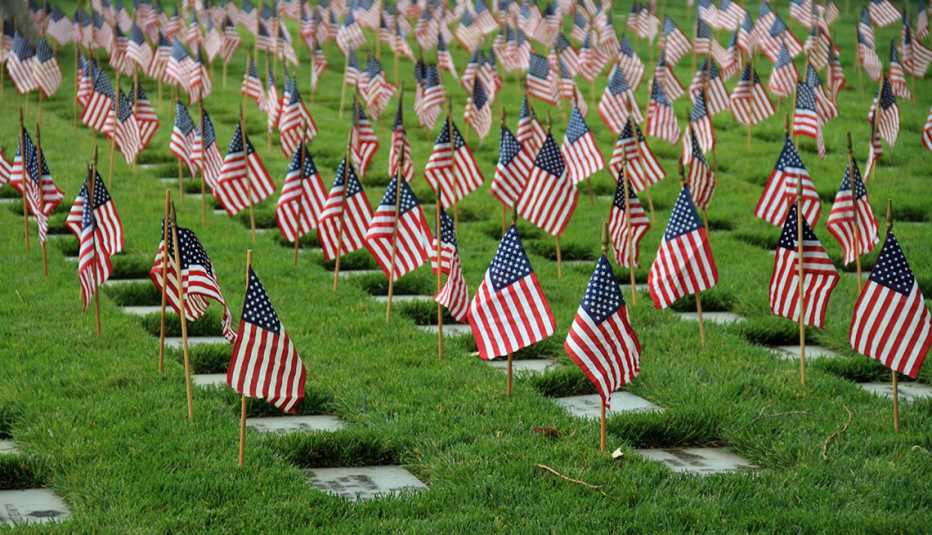AARP Hearing Center
En español | Echoes of the nation’s greatest fight — the Civil War — still reverberate from coast to coast.
Some ring strong: of course the end of slavery, perhaps the worst disgrace in the nation's history. And the 620,000 ancestors lost. Other vestiges have weakened with the passage of time but are no less legacies of the four horrific, heroic years that shaped us as one nation.
Here are eight ways the Civil War indelibly changed us and how we live:
1. We have ambulances and hospitals.
The Civil War began during medieval medicine's last gasp and ended at the dawn of modern medicine. Each side entered the war with puny squads of physicians trained by textbook, if at all. Four years later, legions of field-tested doctors, well-versed in anatomy, anesthesia and surgical practice, were poised to make great medical leaps.
The nation's first ambulance corps, organized to rush wounded soldiers to battlefront hospitals and using wagons developed and deployed for that purpose, was created during the Civil War. The idea was to collect wounded soldiers from the field, take them to a dressing station and then transport them to the field hospital.
Doctors laid out the hospitals as camps divided into well-defined wards for specific activities such as surgery and convalescence. Women flocked to serve these hospitals as nurses.
Before the war, most people received health care at home. After the war, hospitals adapted from the battlefront model cropped up all over the country. The ambulance and nurses' corps became fixtures, with the Civil War's most famous nurse, Clara Barton, going on to establish the American Red Cross. Today's modern hospital is a direct descendant of these first medical centers.
2. We prize America as a land of opportunity.
The Civil War paved the way for Americans to live, learn and move about in ways that had seemed all but inconceivable just a few years earlier. With these doors of opportunity open, the United States experienced rapid economic growth. Immigrants also began seeing the fast-growing nation as a land of opportunity and began coming here in record numbers.
For many years Southern lawmakers had blocked the passage of land-grant legislation. But they weren't around after secession, and in 1862 Congress passed a series of land-grant measures that would forever change America's political, economic and physical landscape:
- The First Transcontinental Railroad. Also known as the "Pacific Railroad," the world's first transcontinental line, built between 1863 and 1869, was at least partly intended to bind California to the Union during the Civil War. To build the line, the Union Pacific and Central Pacific railroads were granted 400-foot rights-of-way plus 10 square miles of government-owned land for every mile of track built.
- Homesteading in the West. The Homestead Act, enacted in 1862, provided that any adult citizen (or intended citizen who had never borne arms against the U.S. government) could be granted 160 acres of surveyed government land after living on it — and making improvements to it — for five years. After the Civil War, Union soldiers could deduct the time they had served from the residency requirement.
- The land-grant college system. The Morrill Land Grant Act authorized the sale of public lands in every state to underwrite the establishment of colleges dedicated to the "agricultural and mechanical arts." It also required the teaching of military tactics. In time, the new law would give rise to such institutions of higher learning as Michigan State, Texas A&M and Virginia Tech.
The same year brought another innovation — a national paper currency — that would literally bankroll the rapidly expanding government and at the same time grease the wheels of commerce from coast to coast. In 1862, with the Union's expenses mounting, the government had no way to continue paying for the war. "Immediate action is of great importance," Treasury Secretary Salmon P. Chase told Congress. "The treasury is nearly empty." The solution: treasury notes bearing no interest and printed on the best banking paper, as proposed to President Abraham Lincoln by Col. Edmund D. Taylor, who would later became known as "the father of the greenback."
3. We begin summer with a tribute to fallen soldiers.
Ever wonder why we display flags and memorialize fallen solders just as summer gets under way? Flowers, that's why.
The first memorial days were group events organized in 1865 in both the South and North, by black and white, just a month after the war ended. Quickly evolving into an annual tradition, these "decoration days" were usually set for early summer, when the most flowers would be available to lay on headstones.
Decoration days helped the torn nation heal from its wounds. People told — and retold — their war stories, honored the feats of local heroes, reconciled with former foes.
After World War I, communities expanded the holiday to honor all who have died in military service, although the official national observance didn’t begin until 1971.
This year, Memorial Day falls on May 30. No matter where you are on Memorial Day, a national moment of remembrance takes place at 3 p.m. local time.
4. We let technology guide how we communicate.
Abraham Lincoln was a techie. A product of the Industrial Revolution, Lincoln is the only president to have held a patent (for a device to buoy boats over shoals). He was fascinated with the idea of applying technology to war: In 1861, for example, after being impressed by a demonstration of ideas for balloon reconnaissance, he established the Balloon Corps, which would soon begin floating hot-air balloons above Confederate camps in acts of aerial espionage.


Lincoln also encouraged the development of rapid-fire weapons to modernize combat. Pulitzer Prize-winning historian James McPherson, the author of Tried by War: Abraham Lincoln as Commander in Chief, notes that Lincoln personally tested the "coffee-mill gun," an early version of a hand-cranked machine gun.







































































